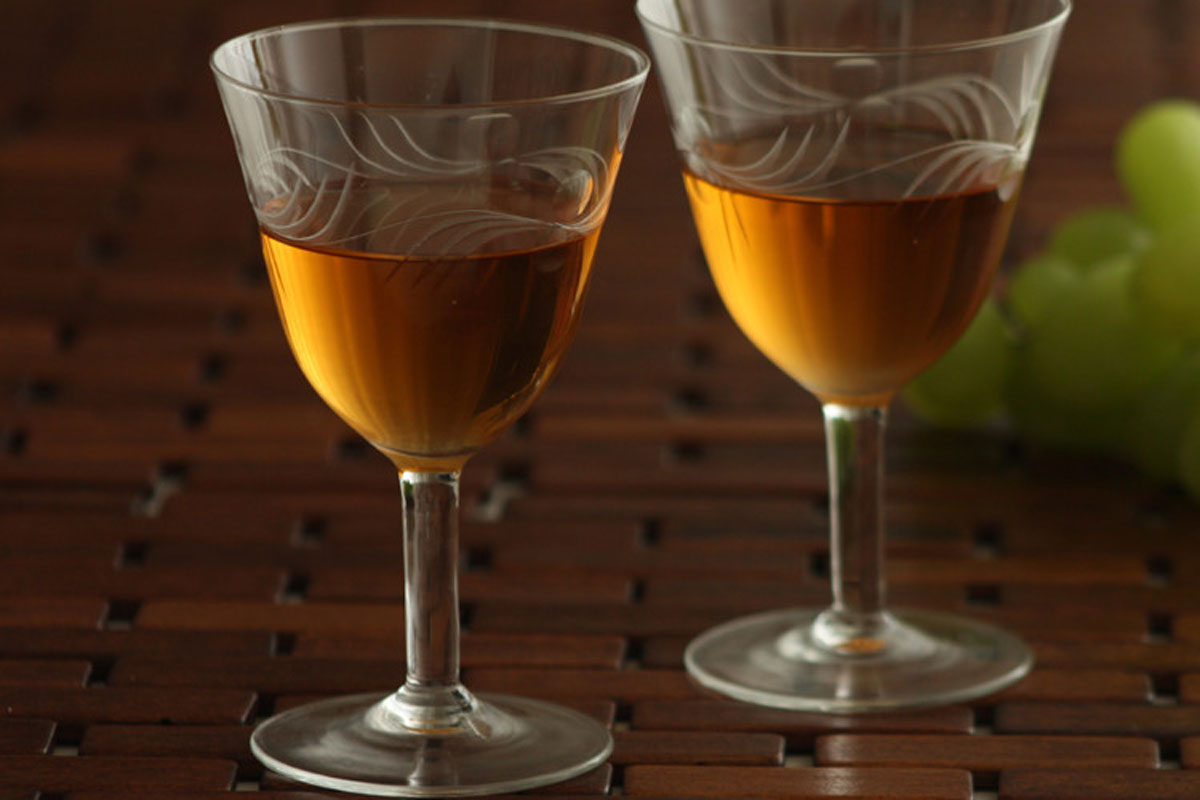Sparkling Splendor: Immerse in the Bubbly Magic of Croatian Indigenous Varieties
 Croatian sparkling wines are made in every modern or traditional way imaginable. There are excellent examples of Champagne-method sparkling wines. Also, there are many balanced Prosecco-method wines made in Croatia or Italy. Even some rediscovered, less-known methods provide promising results to Croatian winemakers.
Croatian sparkling wines are made in every modern or traditional way imaginable. There are excellent examples of Champagne-method sparkling wines. Also, there are many balanced Prosecco-method wines made in Croatia or Italy. Even some rediscovered, less-known methods provide promising results to Croatian winemakers.
Sparkling wine has become an integral part of celebrations and traditions in the country. In recent years, Croatian sparkling wines have gained international acclaim, winning prestigious awards and capturing the attention of wine enthusiasts worldwide. The unique profile of these wines has contributed to their growing popularity.
And, this uniqueness of the profile often lies in an essential Croatian wine feature. That would be biodiversity and numerous indigenous grape varieties. With some knowledge and technology, even grapes traditionally unsuitable for making sparkling wines achieve stunning results.
What are the indigenous grapes of Croatia?

Croatia is unusually rich in autochthonous varieties, and biodiversity is strong in Croatia. White wines that are considered indigenous in Croatia are:
- Graševina
- Malvasia Istriana
- Pošip
- Žlahtina
- Škrlet
- Debit
- Maraština
- Kraljevina
- Vugava
- Grk
- Kujundžuša
- Bogdanuša,
- Dubrovnik Malvasia
- Zlatarica
and many others.
Each of these varieties has its own sparkling wine. And the story doesn’t end with white varieties. Many indigenous Croatian red grape varieties are vinified as white and made into sparkling wine.
Red indigenous Croatian varieties / also made as sparkling wine:
- Babić
- Plavina
- Plavac mali
- Teran
What wine originated in Croatia?
Prošek is a uniquely Croatian wine type, more precisely, a Dalmatian sweet remedy made from dried grapes.
Do not confuse it with Italian Prosecco! Prošek and Prosecco are very different, and a similar name is the only thing they have in common.
Needless to say, traditional Prošek was always made with indigenous varieties. Today, there are excellent examples of Prošek made from Maraština, Grk, Vugava, Žlahtina, Plavac Mali and Babić…

The Samobor Bermet is another autochthonous wine from Croatia, particularly Upland Croatia. It’s an aromatised wine with numerous ingredients, priding the Samobor Bermet with its unique flavour.
The most prevalent varieties in Bermet cannot be considered indigenous, although there is a long tradition of growing Blauer Portugieser and Blaufränkisch in Samobor vineyards.
What is the traditional wine of Croatia?
Despite Prošek and Bermet being originally traditional Croatian wine types, they are produced in minuscule quantities. Traditional Croatian “wine brands” in terms of popularity and wide availability are:
- Babić – a red grape indigenous to the Šibenik-Knin subregion of Northern Dalmatia, gives wines of distinctive aromatic characteristics, such as Marasca cherry.
- Plavac mali – the most planted Croatian red grape indigenous to Dalmatia, gives unique, robust and tannic wines. Traditional aromatic profile spreads from carobs and dark fruit to herbs (sage) and dried figs.
- Graševina – every fourth vine in Croatia is Graševina. Considered native to the continental part of Croatia, Graševina expressions cover every style, from sparkling, fresh and aged white to sweet wines.
- Malvasia Istriana – is extremely popular in Croatia, especially in the summer months, due to the most widespread refreshing, clean style of Istrian Malvasia wine.
- Pošip – this most planted white Dalmatian variety spread from a single island (Korčula). Traditionally, it gives powerful and structured white wines, but today, it is often vinified as fresh white wine.
- Žlahtina – when it comes to light-bodied, refreshing white wine, this variety is a perfect example of hard-to-pronounce but easy-to-drink.
Sparkling wines made from Croatian indigenous varieties
Almost every Croatian indigenous variety in any commercial quantity on the market was also made as a sparkling wine. Some varieties, such as Graševina or Malvasia Istriana, are made both in the Champagne method and in the Prosecco method.
Sparkling wines from Croatian indigenous varieties achieve a unique and delightful expression of the country’s winemaking heritage. These key features explain why:
- Croatian sparkling wines derive their distinctiveness from the use of indigenous grape varieties. The indigenous grape varieties contribute to various flavours in Croatian sparkling wines.
- The terroir of Croatia, with its diverse microclimates and soil types, imparts unique characteristics to the grapes.
- Croatian winemakers combine traditional and modern production methods to craft sparkling wines.
- In recent years, Croatian sparkling wines have gained international recognition for their quality and uniqueness.
- Croatian winemakers continue to innovate in producing sparkling wines, experimenting with different blends, ageing techniques, and dosage levels.
With a focus on terroir, diverse grape varieties, and a blend of tradition and innovation, these sparkling wines offer a captivating and distinct experience for wine enthusiasts seeking something truly special.
Sparkling wines made from red grapes
Making sparkling white from red varieties is a technological challenge. Especially with robust Dalmatian red grapes, about which Croatia is known.
These wines are still made in experimental quantities. The grapes used in production are Babić, Plavina, Plavac Mali, Teran…
These grapes, especially Plavac Mali, Babić and Teran, are known for fuller-bodied red wines. It seems like today, with modern knowledge and technique, the same grape can be used in various styles to accompany the whole meal.
For example, Babić can be made as sparkling wine, as a still rose wine, as a red wine, and as a sweet red wine. In such a manner, a single variety can be paired with each meal course, from appetiser to dessert.
Babić sparkling wine
Testament Winery makes a perfect example. Testament Babić Opolo Brut is a sparkling rose wine with a specific aroma of the Babić variety, only more drawn towards the vineyard peaches, strawberries and wildflowers. The taste follows the nose in a harmonious whole. It is an excellently balanced sparkling wine, full and fresh simultaneously. Full of substance with low alcohol level at 11%.
The name “Opolo” suggests a connection with Dalmatian tradition. That used to be a name for a rose wine in Dalmatia, and it is still used today, although not necessarily in a positive context. Not all traditions are worth preserving, but this name on a professionally made sparkling wine from a local Babić variety provides additional intrigue.
Babić grape was harvested earlier, in mid-August, especially for the sparkling wine. It was fast processed immediately. Crushing, muddling, 1-hour maceration, then free-flow to the fermentation tank.
The first fermentation for the base wine lasted 2 months, with the mixing of the yeast sediment.
The second fermentation was in the bottle, with 24 months of the yeast sediment before disgorgement.
The result is impressive. More so if you ideally pair it with gazpacho, oysters or simply as an aperitif, served at 8°C
FAQs
Can I find Croatian sparkling wine outside of Croatia?
Yes, some international wine retailers and speciality stores offer Croatian sparkling wines. Or you can order online from the Wine&more store.
What food pairs well with Croatian sparkling wine?
It depends. There are various options covering every possible sparkling wine and food pairing combination. Seafood, cold cuts, and light appetisers complement the vibrant flavours of most Croatian sparkling wine.
Are Croatian indigenous grape varieties unique to the region?
Many grape varieties used in Croatian sparkling wine are indigenous to the country. Some of them are very local and tied to local traditions and terroir.
How does climate affect the taste of Croatian sparkling wine?
The diverse climate in different regions contributes to the varied flavour profiles of Croatian sparkling wines. Considering its size, Croatia is one of the most diverse wine regions of the world.
Are there guided tours available for Croatian sparkling wine vineyards?
Yes, many vineyards in Croatia offer guided tours, providing visitors with a unique and educational experience.



















